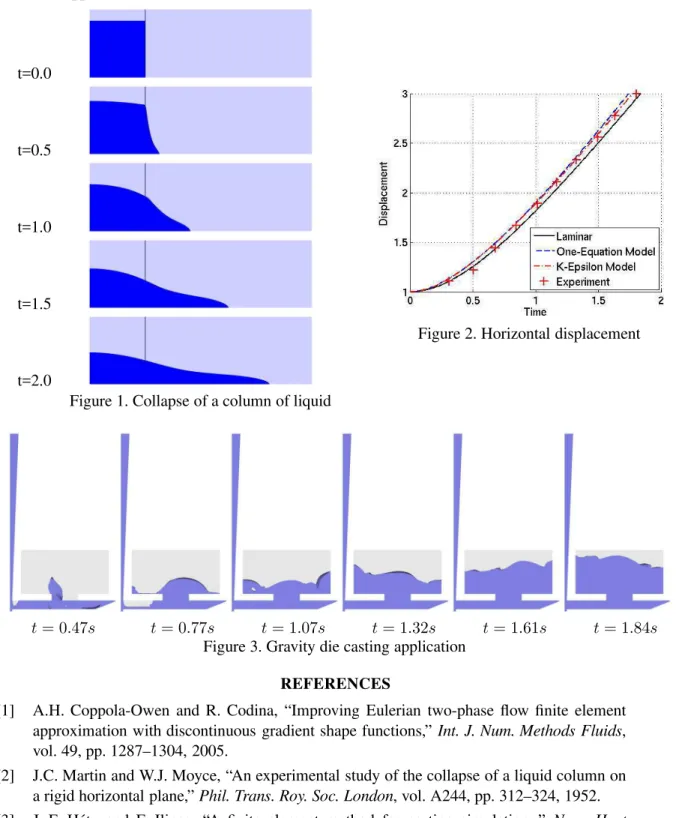Publisher’s version / Version de l'éditeur:
Vous avez des questions? Nous pouvons vous aider. Pour communiquer directement avec un auteur, consultez la première page de la revue dans laquelle son article a été publié afin de trouver ses coordonnées. Si vous n’arrivez pas à les repérer, communiquez avec nous à PublicationsArchive-ArchivesPublications@nrc-cnrc.gc.ca.
Questions? Contact the NRC Publications Archive team at
PublicationsArchive-ArchivesPublications@nrc-cnrc.gc.ca. If you wish to email the authors directly, please see the first page of the publication for their contact information.
https://publications-cnrc.canada.ca/fra/droits
L’accès à ce site Web et l’utilisation de son contenu sont assujettis aux conditions présentées dans le site LISEZ CES CONDITIONS ATTENTIVEMENT AVANT D’UTILISER CE SITE WEB.
8th World Congress on Computational Mechanics (WCCM8) [Proceedings], pp.
1-2, 2008
READ THESE TERMS AND CONDITIONS CAREFULLY BEFORE USING THIS WEBSITE.
https://nrc-publications.canada.ca/eng/copyright
NRC Publications Archive Record / Notice des Archives des publications du CNRC :
https://nrc-publications.canada.ca/eng/view/object/?id=55b95ddd-58ff-4183-973b-90826b1c31c7 https://publications-cnrc.canada.ca/fra/voir/objet/?id=55b95ddd-58ff-4183-973b-90826b1c31c7
NRC Publications Archive
Archives des publications du CNRC
This publication could be one of several versions: author’s original, accepted manuscript or the publisher’s version. / La version de cette publication peut être l’une des suivantes : la version prépublication de l’auteur, la version acceptée du manuscrit ou la version de l’éditeur.
Access and use of this website and the material on it are subject to the Terms and Conditions set forth at
Solution of free surface flows using enriched pressure shape functions
Ilinca, Florin; Hétu, Jean-Francois
8th. World Congress on Computational Mechanics (WCCM8) 5th European Congress on Computational Methods in Applied Sciences and Engineering (ECCOMAS 2008) June 30 –July 5, 2008 Venice, Italy
SOLUTION OF FREE SURFACE FLOWS USING ENRICHED
PRESSURE SHAPE FUNCTIONS
Florin Ilinca1and * Jean-Franc¸ois H´etu2 1National Research Council
75 de Mortagne, Boucherville, Qc, J4B 6Y4, Canada florin.ilinca@cnrc-nrc.gc.ca
2 National Research Council
75 de Mortagne, Boucherville, Qc, J4B 6Y4, Canada jean-francois.hetu@cnrc-nrc.gc.ca
Key Words: Free surface flows, Stabilized finite elements, Discontinuous pressure gradient, Level set
method.
ABSTRACT
This paper presents a finite element solution algorithm for three-dimensional free surface flows for die casting applications. The problems of interest present unusual challenges for both the physical modelling and the solution algorithm. High Reynolds number transient flows with free surfaces have to be computed on complex three-dimensional geometries. In this work, a segregated algorithm is used to solve the Navier-Stokes, turbulence and front tracking equations. The Streamline-upwind/Petrov-Galerkin method is used to obtain stable solutions to convection dominated problems. Turbulence is modelled using either a one-equation turbulence model or the k − ǫ two-equation model with wall functions. The position of the flow front in the mold cavity is computed using a level set approach. Finally, equations are integrated in time using an implicit Euler scheme.
In this work special attention is given to the solution of the free surface flow in the presence of gravity. When using a fixed mesh, the fluid/air interface is generally located inside mesh elements. A simple interpolation leads to inappropriate treatment of gravity forces, pressure gradient and inertia within partially filled elements and generates spurious oscillations which are caused by discontinuities of the gravity forces and pressure gradient across the interface. In this work we use enriched shape functions for the pressure that introduce a discontinuity in the normal pressure gradient at the interface [1]. The additional pressure degree of freedom is eliminated at the elementary system level by static condensa-tion. Therefore the finite element degrees of freedom and the size of the resulting matrix system remain the same, making implementation much easier than for extended finite element methods.
The enriched pressure discretization is first validated on a series of simple free surface flows and then applied to a die casting problem. The first test problem is the collapse of a column of liquid for which experimental measurements are available [2]. Figure 1 shows the solution for different values of the dimensionless time. The free surface is well captured and mesh refinement studies indicate that the so-lution depends very little on the mesh element size. Figure 2 compares the horizontal displacement of the liquid as given by a laminar, one-equation model and k − ǫ model with the experimental measure-ments. The agreement is very good and a slight dependence on the turbulence model is observed.
The method is then applied to the solution of a gravity casting application [3]. The filling pattern when solving with the one-equation model is shown in Figure 3. As can be seen the solution approach deals extremely well with very deformed free surfaces. It avoids oscillations in the velocity field whitout the need of remeshing. It is able to capture jets, folding of the free surface and sharp changes in the free surface. The methodology presents the robustness and cost effectiveness needed to tackle complex industrial applications. t=0.0 t=0.5 t=1.0 t=1.5 t=2.0
Figure 1. Collapse of a column of liquid
Figure 2. Horizontal displacement
t = 0.47s t = 0.77s t = 1.07s t = 1.32s t = 1.61s t = 1.84s Figure 3. Gravity die casting application
REFERENCES
[1] A.H. Coppola-Owen and R. Codina, “Improving Eulerian two-phase flow finite element approximation with discontinuous gradient shape functions,” Int. J. Num. Methods Fluids, vol. 49, pp. 1287–1304, 2005.
[2] J.C. Martin and W.J. Moyce, “An experimental study of the collapse of a liquid column on a rigid horizontal plane,” Phil. Trans. Roy. Soc. London, vol. A244, pp. 312–324, 1952. [3] J.-F. H´etu and F. Ilinca, “A finite element method for casting simulations,” Num. Heat
